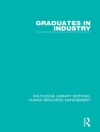In this eye-opening critique, Ronald Kramer and James C. Oleson interrogate the promises of crime science and target our misplaced faith in technology as the solution to criminality. This book deconstructs crime science's most prominent manifestations—biological, actuarial, security, and environmental sciences. Rather than holding the technological keys to crime's resolution, crime sciences inscribe criminality on particular bodies and constitute a primary resource for the conceptualization of crime that many societies take for granted. Crime science may strive to reduce crime, but in doing so, it reproduces power asymmetries, creates profit motives, undermines important legal concepts, instantiates questionable practices, and forces open new vistas of deviant activity.
Mục lục
Contents
List of Illustrations
Acknowledgments
Introduction
1. A Brief Sketch of Crime Science and Its Limits
2. Biological Crime Science
Identification and Biosocial Criminology
3. Actuarial Science
Crime Control as a Risky Business
4. Security Science
Cartographies of Crime, States of Exception,
and the Twilight of Liberty
5. Environmental Crime Science
Missing the Forest for the Acronyms
Conclusion
Notes
Bibliography
Index
Giới thiệu về tác giả
Ronald Kramer is Senior Lecturer in Criminology at the University of Auckland. His previous books include The Rise of Legal Graffiti Writing in New York and Beyond and Culture, Crime and Punishment. James C. Oleson is Associate Professor in Criminology at the University of Auckland. His previous books include Criminal Genius: A Portrait of High-IQ Offenders and Fifty Years of Causes of Delinquency: The Criminology of Travis Hirschi.












